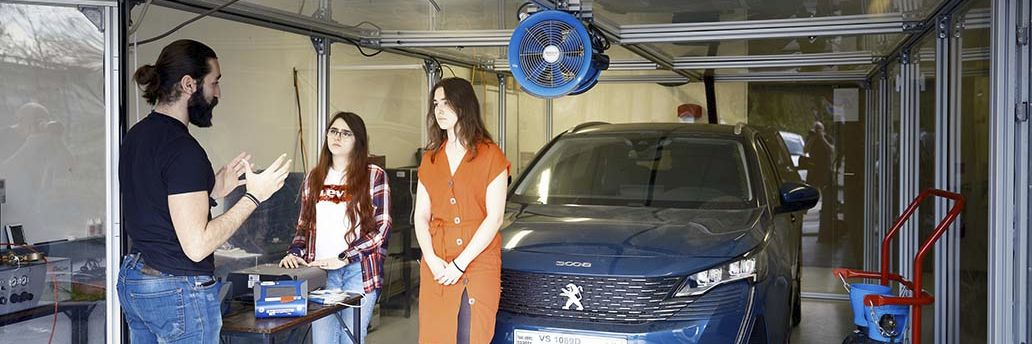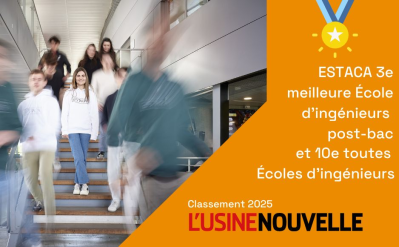News

World Air Quality Day
ESTACA commissioned to study air pollution in car interiors and railway enclosures
For several years now, ESTACA, the leading post-baccalaureate engineering school in the field of transport and sustainable mobility, has been commissioned by public organizations, companies and major industrial firms to carry out research into air quality in confined or semi-confined spaces. Whether it's cars, stations, future metros or trains, numerous projects and studies are underway at the École to address the major environmental and public health issues involved. Focus on this research on the occasion of World Air Quality Day on October 14.
According to the World Health Organization, air pollution is the main environmental risk to health worldwide. Transport is a major cause of pollution, emitting gaseous pollutants and harmful fine or ultrafine particles, which are then released into the atmosphere, as well as into the interior of vehicles to which drivers and passengers are exposed. In order to help improve air quality in the various areas linked to transport systems, and particularly in enclosed spaces, government agencies and companies have commissioned ESTACA to carry out studies and research on the subject.
Better understanding and improving air quality inside car interiors
Since the mid-2010s, ESTACA has been involved in a number of advances in air pollution research. Among the projects carried out by the School, CAPTIHV (Caractérisation et Analyse des Polluants issus du Transport automobile et de leur Infiltration dans les Habitacles Véhicules), supported by ADEME, was launched at the end of 2014 with the aim of gaining a better understanding of the mechanisms favoring the infiltration of gaseous and particulate pollutants, by focusing on the dispersion of their exhaust emissions and their infiltration into passenger compartments. It will enable us to make recommendations on the best way to ventilate a vehicle, depending on driving conditions. It also gives automakers and equipment manufacturers access to precise knowledge of the parameters that promote the infiltration of pollutants into passenger compartments.
Another project launched at the end of 2020, AmCoAIR (Amélioration des COnnaissances de la qualité de l'AIR dans un habitacle automobile), will enable further studies to improve knowledge of the dynamics of infiltration and internal emission of pollutants in motor vehicles, and test an innovative concept of intelligent ventilation management for improved air quality in the passenger compartment.
As part of this project, the QUAD team has designed a closed enclosure called a "bubble", capable of accommodating 1:1 scale motor vehicles, in order to characterize the air quality of their passenger compartments. Its originality lies in the possibility of generating a polluted atmosphere, controlled all around the vehicle, to simulate different atmospheric pollution scenarios.
Acting to improve air quality in underground rail enclosures
Studies to measure air quality in EFS (Enceintes Ferroviaires Souterraines) have revealed high levels of suspended particulates, with concentrations of fine particles higher than those observed in outdoor air. These particles are dispersed throughout the EFS and infiltrate the trains through ventilation systems and various openings, with health consequences for users.
Researchers from ESTACA's air quality unit have been commissioned by a major industrial company to understand the dynamics of particles in rail vehicles and evaluate ways of cleaning the air inside new trains. To do this, the researchers are working on a full-scale model of a metro train with an innovative pollution-generating device, designed by the QUAD team, coupled to the original train/metro air-conditioning system, ...
The results of the study carried out by ESTACA researchers validated the design of the polluted atmosphere creation device, assessed filtration efficiencies and visualized particle distribution. These results will enable further development of the air purification systems and validation of the industrial models.
Beyond the vehicle, ESTACA's QUAD team has been commissioned to study the air quality in the stations of Europe's future largest underground rail network, on which work has just begun.
















No comment
Log in to post comment. Log in.